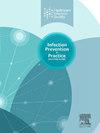了解碳青霉烯酶产生生物(CPOs)的景观,并在英国重点控制的机会
IF 1.9
Q3 INFECTIOUS DISEASES
引用次数: 0
摘要
碳青霉烯酶产生生物(CPOs)是一个日益严重的全球公共卫生威胁,目前有效和负担得起的治疗选择有限。在过去的20年里,英国和其他地区记录的CPO感染和殖民化的发病率上升,需要审查和更新控制策略。重要的是审查其他国家的小儿麻痹症控制框架和重大的小儿麻痹症暴发,因为这些可以为设计有效的公共卫生应对措施提供信息。尽管许多国家通过加强对慢性脊髓灰质炎的公共卫生监测(并在英格兰引入强制通知)、改进实验室检测方法以及跨司法管辖区的数据联系来应对这一上升,但仍存在重大挑战。例如,虽然主要是通过医疗保健患者之间的交叉传播获得的,但也有报告称,人类感染可能是通过自然环境中隐藏的CPOs获得的。鉴于单一健康在抗菌素耐药性中的作用,这是一个重要的考虑因素。在本文中,我们概述了不同国家采用的一些CPO控制策略,以了解全球情况,并详细说明除了医疗保健中的控制之外,为什么迫切需要考虑“单一健康”方法。我们描述了英国现有的CPO控制框架,并强调了处理英国CPO所带来的多方面问题的综合、多学科和跨部门战略的重要性。本文章由计算机程序翻译,如有差异,请以英文原文为准。
Understanding the landscape of carbapenemase-producing organisms (CPOs), and spotlighting opportunities for control in England
Carbapenemase-producing organisms (CPOs) are an increasing global public health threat for which there are limited effective and affordable therapeutic options. The rise in the incidence of CPO infections and colonisations recorded across the UK and beyond over the last 20 years necessitates a need to review and update strategies for control. It is important to review other countries’ frameworks for CPO control and significant CPO outbreaks as these could inform the design of an efficient public health response. Despite many nations reacting to the rise by upscaling public health surveillance of CPOs (and the introduction of mandatory notification in England), improvements in laboratory detection methods, and the linkage of data across jurisdictions, significant challenges remain. For example, though predominantly acquired via cross-transmission between patients in healthcare, there are reports of human infections putatively acquired from CPOs harboured in the natural environment. Given the role of one-health in AMR, this is an important consideration. In this article, we outline some of the CPO control strategies adopted across different countries to give a sense of the global picture, and expand on why, in addition to controls in healthcare, there is a strong need to consider a One-Health approach. We describe the existing framework for CPO control in England and emphasise the importance of an integrated, multi-disciplinary and cross-sectoral strategy for dealing with the multifaceted problem posed by CPO in England.
求助全文
通过发布文献求助,成功后即可免费获取论文全文。
去求助
来源期刊

Infection Prevention in Practice
Medicine-Public Health, Environmental and Occupational Health
CiteScore
4.80
自引率
0.00%
发文量
58
审稿时长
61 days
 求助内容:
求助内容: 应助结果提醒方式:
应助结果提醒方式:


